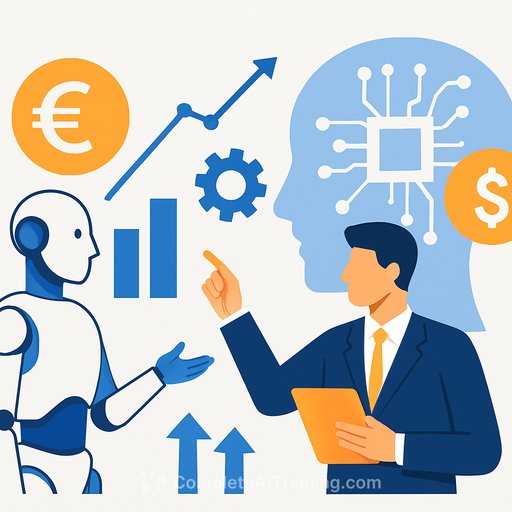AI’s Profit Paradox: Why Moats May Not Form in the Boom
The surge in artificial intelligence investment by major tech companies is driving economic growth but also raising a critical question: will these massive expenditures lead to lasting profits? The scale of spending is impressive, yet the returns aren't matching up—at least not yet.
In the first half of this year, the economy grew at about a 1.2% annual rate, with roughly half of that growth coming from investments in information processing equipment, largely tied to AI-related infrastructure like data centers and hardware. This illustrates how AI is propelling a significant slice of economic activity.
However, companies such as Alphabet, Amazon, Meta, and Microsoft are collectively pouring around $340 billion into AI this year. This level of capital outlay demands substantial profit generation to justify the investment. Currently, the cash flow impact is a drag rather than a boost, highlighting a disconnect between investment and immediate financial returns.
A Dot-Com Echo
The current AI frenzy feels familiar to those who lived through the dot-com bubble. Back then, simply adding “.com” to a company’s name could attract investor interest without guaranteed profits. The internet boom eventually led to genuine productivity gains but also fierce competition that eroded margins.
This history warns us that heavy spending alone doesn’t ensure sustainable profits. The same pattern could unfold with AI, where intense rivalry and quick innovation cycles make it tough to maintain a competitive edge.
Why Building a Moat Is Hard
One of the biggest challenges in AI is the rapid pace of development and the openness of foundational research. New models and breakthroughs emerge nearly every week, often available through open-source channels. This environment makes it difficult for any one company to establish a lasting moat—something that consistently protects profits and market share.
Unlike Microsoft’s Windows or Apple’s iPhone, which have clear, defensible profit engines, AI products face constant pressure from competitors and new entrants. This dynamic can compress margins and limit long-term profitability.
Implications for Product Development
- Focus on sustainable value: Building AI products that solve real problems and create user loyalty is crucial. Without this, high investment risks becoming a sunk cost.
- Prepare for competition: Expect rapid innovation from multiple players. Prioritize agility and continuous improvement over one-time breakthroughs.
- Monitor profitability closely: Keep an eye on how capital expenditures translate into revenue and margins. Profitability will be the key test of success.
For those working in product development, understanding this profit paradox is essential. Investing time and resources wisely, focusing on user needs, and setting realistic expectations for returns can help navigate this uncertain landscape.
To explore practical AI skills that align with today’s market demands, consider checking out comprehensive courses available at Complete AI Training.
Your membership also unlocks:






